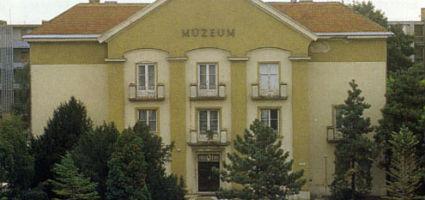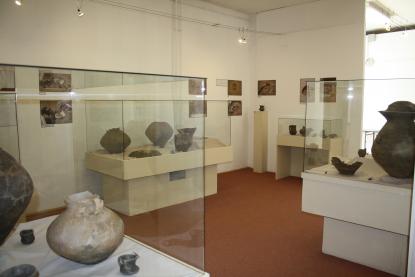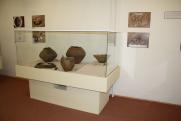 |
Address: 2400, Dunaújváros Városháza tér 4.
Phone number: (25) 411-315
E-mail: intercisamuz@gmail.com
Opening hours: Tue-Sat 10-16
On the first Sunday in each month is open: 14-18 |
|
Ticket for adults
|
700 HUF
|
|
|
Group ticket for adults
(from over 10 people)
|
700 HUF
|
|
|
Ticket for students
|
350 HUF
|
|
|
Group ticket for students
|
350 HUF
|
|
|
Ticket for pensioners
|
350 HUF
|
|
|
Group ticket for pensioners
|
350 HUF
|
|
|
Ticket for families
|
1400 HUF
|
/ family
|
In the outskirts of Kisapostag during 30's of the last century excavations have been conducted. However, a detailed exploration affecting a large area could be conducted only in connection with the construction of motorway M8 .
 During the summer of 2004 excavations were conducted prior to the works outskirts of town. One of these works was performed west of the roundabout on road 6, at Kisapostag. Kenderes. The exhibition in the museum presents the Bronze Age cemetery material unearthed in the region.
During the summer of 2004 excavations were conducted prior to the works outskirts of town. One of these works was performed west of the roundabout on road 6, at Kisapostag. Kenderes. The exhibition in the museum presents the Bronze Age cemetery material unearthed in the region.
A large part of the finds are from Vatya people who lived their in the Middle Bronze Age. The find also include remains of a cemetery associated with them. The town was divided by a deep valley from the cemetery. The dead were buried away the settlement, still, not that far.
A special feature of the cemetery is that the population living there performed two types burial rites. Most of the graves held urns. The dead were burned on bonfires, then the ashes (sometimes with bronze objects as well) were placed in the urn, while mugs were placed inside or next to the urn. Only 3 were found of shrank skeletons, with one having a mug beside. One of the urns yielded bronze objects among others, two bronze broaches and other bronze items.
The Vatya people did not dig their graves, so intense tillage in the past caused a lot of havoc in them. There was a tomb, where only the lower part of the urn of ashes was preserved, the rest of it was destroyed by plough work. Since the cemetery could not be explored in its entirety, we can not say exactly how much hidden graves are still there.
Despite the slight number of graves, the ceramics they yielded provided an extremely varied view. The purpose of the exhibition is to show the visitors the belief system of the era. We also would like the visitors to have a chance to admire ceramic masonry of the Vatya people.
Mrs. Nagy, Mónika Hodik


